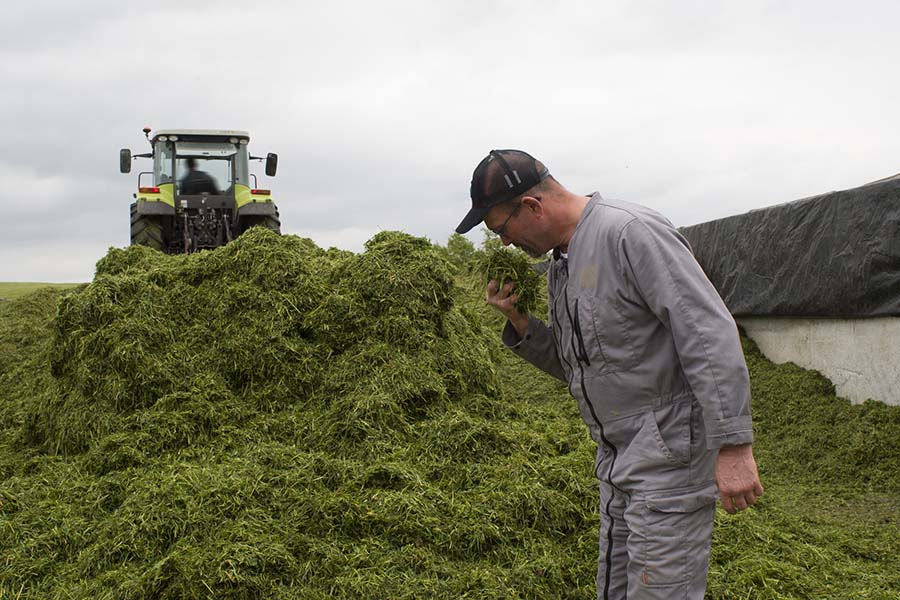In this day and age, and as farmers and citizens of the world, we all share a responsibility to preserve the natural resources that sustain us. Surprisingly, silage covers have a significant part to play in that effort.
At first glance, silage covers appear to function as nothing more than a way to keep the rain off your feed, but they offer some hidden environmental benefits. In addition to keeping livestock healthy, well-fed, and productive, silage covers can help reduce greenhouse gas emissions, prevent nutrient runoff, and protect the environment from contamination.
This article will examine how silage covers can help reduce pollution, protect water resources, and promote sustainable farming practices.
Silage Covers and Greenhouse Gases: A Surprising Connection
You might not expect it, but silage covers can directly help reduce greenhouse gas emissions. That’s because they play a key role in minimizing the release of methane, a potent greenhouse gas that’s even more harmful to the climate than carbon dioxide.
The Methane Mystery: Why Sealing Silage Helps
It might seem strange that sealing a silage pile and keeping oxygen out helps reduce methane production. After all, methane is produced by microorganisms that thrive in oxygen-free environments. But, more than one type of microorganism is at play in silage fermentation.
Lactic acid bacteria, the good guys driving the fermentation process, can tolerate a bit of oxygen. In a well-sealed silage pile, the initial presence of some oxygen gives these bacteria a head start. They quickly get to work, producing lactic acid, which creates an environment that’s less favorable for the methane-producing microorganisms.
Of course, keeping oxygen out in the long run is still important. A well-sealed cover prevents more oxygen from entering the pile, limiting the activity of methane-producing microbes. In the end, a sealed silage cover helps create a balance where the good bacteria outcompete the methane producers, minimizing methane emissions while preserving feed effectively.
Preventing Leaks
Like a tightly fitting lid on a jar, a well-sealed and weighted cover prevents methane from escaping into the atmosphere. This seal is crucial during the initial stages of fermentation when methane production is highest.
Enhancing Methane Capture
Oxygen barrier films, combined with traditional covers, minimize the amount of methane that can diffuse through the cover, creating a virtually impenetrable methane trap. This valuable methane could be collected and used for energy production, such as generating electricity or heat.
Waste Not, Want Not: Reducing Feed Spoilage
Spoiled silage is like money washed down the drain. Producing and harvesting livestock feed requires significant inputs—land, fertilizer, water, and energy—all of which contribute to GHG emissions. Silage covers help prevent this waste and minimize the overall environmental impact.
Protecting from Oxygen and Moisture
Silage covers shield the silage from oxygen and moisture, the two primary culprits behind spoilage. They preserve your silage’s nutritional value, safety, and palatability, and minimize the need to spend resources on replacing spoiled feed.
Boosting Feed Efficiency
Efficient feed utilization is essential for sustainable livestock production. When animals extract maximum nutrients from their feed, the demand for feed production and its associated environmental burden is reduced.
Better Digestion, Less Waste
High-quality silage, protected by covers, is easier for animals to digest. This improved digestibility means they can extract more energy and nutrients from the feed, improving the efficiency of your operations and resource use.
Reduced Methane from Livestock
Remember all the hubbub around cow “emissions”? While the focus may have been misplaced (it’s burps, not farts!), livestock production still accounts for a significant portion of global methane emissions. Feeding high-quality silage, however, minimizes the amount of undigested material passing into the later stages of the digestive tract and, ultimately, reduces methane production.
Reducing Fuel Consumption
From transportation to feed handling, the fuel consumed in farm operations is a significant contributor to greenhouse gas emissions. Effective silage management plays a crucial role in reducing its impact.
Minimizing Feed Handling
Since well-preserved silage requires less frequent handling and transportation, the need for tractors, trucks, and other equipment is reduced, lowering fuel consumption and associated emissions.
Optimized Storage
Properly covered silage enjoys an extended shelf life without significant quality loss. Consequently, fewer feed deliveries are needed, which further minimizes fuel consumption and transportation-related emissions.
Protecting Our Waterways
Silage effluent is a nutrient-rich liquid that naturally forms during silage making. However, it must be carefully managed because it can harm the environment if it escapes. Silage covers are instrumental in preventing effluent from contaminating surrounding water resources.
Why Effluent Matters
Effluent contains high levels of nutrients like nitrogen and phosphorus, as well as organic matter. While these nutrients are essential for plant growth, excessive amounts in our waterways can disrupt delicate aquatic ecosystems, leading to eutrophication, where excess nutrients fuel the rapid growth of algae and other aquatic plants. This overgrowth depletes oxygen levels in the water, harming fish and other aquatic life and, ultimately, altering the balance of species.
Effluent can also directly contaminate drinking water sources, making them unsafe for human consumption and requiring costly treatment to remove pollutants.
How Silage Covers Help
Silage covers are instrumental in preventing effluent from escaping and contaminating surrounding water resources. High-quality silage covers are designed to be extremely waterproof so they can prevent rainwater from entering the silage mass and minimizing the formation of effluent in the first place.
A properly weighted and sealed cover improves a cover’s effectiveness by minimizing gaps and preventing water from seeping in around the edges. Some covers are even designed with channels or grooves that help direct the flow of rainwater away from the silo to prevent it from pooling and infiltrating the silo.
Protecting Groundwater
Groundwater, a vital resource for drinking water, irrigation, and ecosystem health, is also at risk from silage effluent. Silage covers help protect groundwater by preventing leaching, the process by which dissolved substances are carried downward through the soil by rainwater. By preventing rainwater from entering the silage, covers reduce the amount of liquid that can percolate through the silage and carry contaminants into the groundwater.
Covers also help minimize soil contamination by preventing effluent from coming into direct contact with the soil. This, in turn, protects the soil ecosystem and reduces the risk of contaminants being transported to groundwater through soil infiltration.
Beyond the Cover: A Comprehensive Approach
While silage covers are a critical tool for preventing nutrient runoff and protecting groundwater, they are most effective when combined with other best management practices, such as proper silo siting, effective drainage systems within the silo itself, and responsible effluent management.
In the end, an investment in high-quality silage covers supports both your bottom line by preserving valuable feed and promoting a healthier planet by reducing greenhouse gas emissions, preventing nutrient runoff, and safeguarding groundwater resources.




